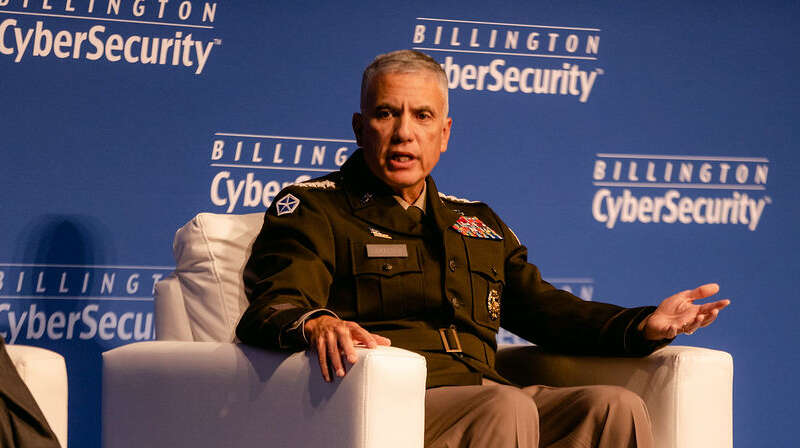
The National Security Agency (NSA) has wrapped up a 60-day study to look at how the use of AI technology fits into the agency’s future, according to Gen. Paul Nakasone, who heads both NSA and the U.S. Cyber Command.
At the Billington Cybersecurity Summit on Sept. 5, Gen. Nakasone shared that NSA “recently completed” the study to develop a roadmap for AI and machine learning (ML) going forward.
“Much in the sense that the private sector has been doing artificial intelligence for quite a while, we’ve been doing it for a long time as well,” Ge. Nakasone said. “And so, one of the first things that we said is, ‘how does generative artificial intelligence and machine learning fit into the future?’”
The general explained that the NSA began the study by looking at how it currently uses AI, which is primarily within the agency’s broad signals intelligence mission. The agency then looked at how it could use AI for its cybersecurity mission, as well as for its business functions.
“One of the things that was very interesting from the roadmap and the subject matter experts that came back in the briefing was, I think a third of the uses had a tremendous impact on the business functions of our agency – in terms of how we do our business and our accounting,” he said.
The second piece that the NSA looked at was engaging with U.S. companies that provide AI-related intellectual property. Gen. Nakasone said NSA has had the opportunity to talk to top experts at some of the leading AI corporations in America to discuss the tradecraft, the techniques, and what the NSA is targeting “in terms of what you should be aware of, as you think about the future.”
The third and final piece of the study looked at how to put the proper AI safeguards in place, he said. While the verdict is still out on how exactly to do just that, Gen. Nakasone pointed to a long list of areas that NSA plans to look into going forward.
“Here are some of the things that we think we as an agency have to look at. We have to look at policy. We have to look at governance. We have to look at our infrastructure. We have to look at security, no doubt security,” Gen. Nakasone said.
“We have to look at ‘Hey, where do we need to be bigger players in international forums on artificial intelligence,’” he continued. “We have the intellectual capital, we have the know-how, how do we assist the government in a number of different forums going forward? And then finally, and perhaps among the most important, what does our workforce have to look like? And how do we train our workforce differently in the future?”
As NSA looks to the future, Gen. Nakasone said the agency sees “tremendous changes” with the speed and security of AI coupled with the safeguards that it plans to put in place.
Gen. Nakasone also noted that Congress asked the U.S. Cyber Command to develop a five-year plan, which he said the agency now has completed. While he didn’t offer any additional details on this plan, he did say it examines “how do we use AI in the realm of cyberspace operations going forward.”
“[AI] is growing quickly. And we also know that not only is it growing quickly for us, it’s growing quickly for our adversaries. So, this is something that we will continue to work on very, very hard going into the future,” he concluded.
